
Food Safety Bulletin for Consumers 2012 (2 nd Issue)
Published by the Centre for Food Safety
Feature Articles
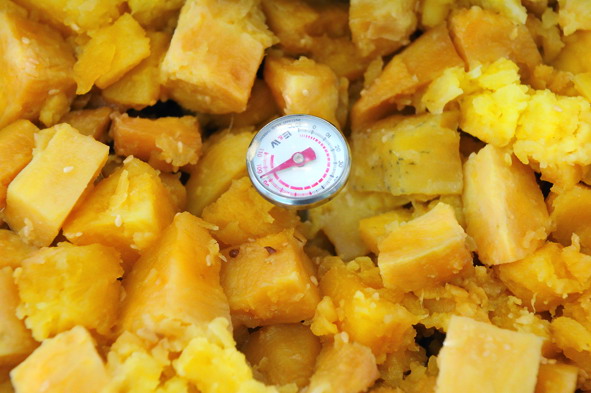
Food Safety and Temperature
Food safety involves many important factors, one of which is food temperature, including the temperature at which food is cooked and stored. According to the statistics for 2011, the number of restaurant-related food poisoning incidents totalled 290, of which 31 were attributed to the storage of food at inappropriate temperatures.
An effective way to ensure food safety is to adopt a proper cooking process to kill the bacteria in food with high temperatures. During the cooking process, the core temperature must reach at least 75oC or above for 30 seconds until the food is thoroughly cooked.
Attention should be paid not only to the temperature at which food is cooked but also to the temperature at which food is stored (hot holding or cold holding). Bacteria multiply rapidly in a geometric progression at temperatures between 4oC and 60oC and the rate of multiplication slows at 4oC or below or at above 60oC. So, frozen food must be stored below -18oC, and the right temperature for cold holding of food is 4oC or below and that for hot holding is above 60oC.
Food prepared should preferably be consumed immediately. Otherwise, it must be kept hot or kept cold at an appropriate temperature. For example, hot food must be steamed over hot water in a covered wok, whilst cold food and cold dishes like sushi and sashimi must be refrigerated.
Furthermore, in order to ensure food safety, bear in mind the rule of "two hours at room temperature", i.e. perishable food may be refrigerated for further use later if kept at room temperature for not more than two hours, but is no longer fit for consumption if kept at room temperature for more than four hours.
During transportation, food should be placed in a cooler with a cold source such as ice or frozen gel packs, or in a heat-generating insulated container to maintain the temperature of the food.
The thermometer is the best tool for measuring food temperature. An insert type thermometer may be used to measure the core temperature of food during cooking and a small thermometer may be placed inside a refrigerator to monitor whether the refrigerator is operating normally.
Food Safety Publicity Drive


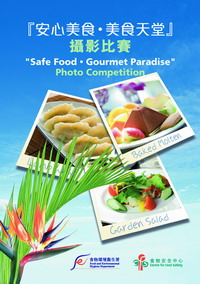
Keeping food at the right temperature is the key to ensure food safety. It is important to get this message across to the public. The Centre for Food Safety (CFS) takes "Get the Temperature Right" as the theme of Food Safety Day 2012, with a view to promoting appropriate holding temperature to ensure food safety. Representatives of Food Safety Charter signatories were invited to the event in recognition of their continuous support to the Charter.
Among other food safety publicity drives, the CFS held the "Food Safety Day 2012" on 26 May 2012 to promote preparing and keeping food at the right temperature. A photo competition was launched to showcase Hong Kong through the lens under the theme "Safe Food‧Gourmet Paradise".
 A series of talks on food safety are also organised for the public between May and August 2012, covering getting the temperature right, nutrition labelling, keeping foreign bodies away from food, as well as food incidents and risk perception.
A series of talks on food safety are also organised for the public between May and August 2012, covering getting the temperature right, nutrition labelling, keeping foreign bodies away from food, as well as food incidents and risk perception.
Readers' Corner
Prevent Hepatitis E
Hong Kong witnessed a rising trend of occurrence of hepatitis E cases in recent years. 117 cases were recorded in 2010, being the highest number of hepatitis E cases ever reported in a year. In this issue, we are going to talk about the Hepatitis E virus (HEV) and the risk in food.
HEV is primarily transmitted via the faecal-oral route. In some major outbreaks which happened in the past, contaminated water or food was implicated. Hepatitis E is common in developing countries where environmental sanitation is poor, but it is rare in developed countries. While previously it occurred mostly in travellers returning from endemic areas, cases not related to travel are on the increase in developed countries. It is suspected that these cases were caused by the consumption of inadequately cooked food such as shellfish and pig offal, which are, as documented, possible food sources of HEV.
Prevention
Comparing to vegetative bacteria, foodborne viruses are generally more resistant to heat. In addition, persistence of the viruses may be different in different food substrates. Heat treatment usually recommended (i.e. cooking to an internal temperature of 75°C for 30 seconds) to ensure food safety may not be adequate for some virus-food combinations. More stringent time and temperature combinations are required.
For taste, texture and other sensory reasons, inadequately cooked pig livers are preferred by some consumers. However, to prevent hepatitis E, food handlers and consumers should cook pig livers thoroughly, especially during hotpot or congee cooking. For sliced pig livers, depending on thickness and quantity, boil at 100°C or stir-fry in hot skillet/wok for at least three to five minutes.Heating to a core temperature of 90°C for 90 seconds is required for cooking of molluscan shellfish; hence, boil at 100°C until their shells open and boil for a further three to five minutes afterwards.In addition, food handlers and consumers are also advised to observe good personal and food hygiene practices. Consumers could ask for thoroughly cooked food when eating out, and this is particularly important for high risk populations.
Key Points to Note:
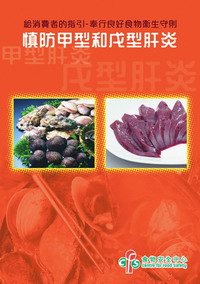
- HEV generally causes self-limiting disease, but can cause serious complications in some high risk populations.
- Inadequately cooked pig livers could be one possible source for local hepatitis E.
- Cook shellfish and pig offal thoroughly to prevent hepatitis E, especially during hotpot or congee cooking.
Advice to Public
Make sure pig livers and molluscan shellfish are thoroughly cooked before consumption.
Use separate utensils for handling raw food and ready-to-eat food to avoid cross contamination during hotpot cooking.
The Findings of the Total Diet Study – Inorganic Arsenic in Foods
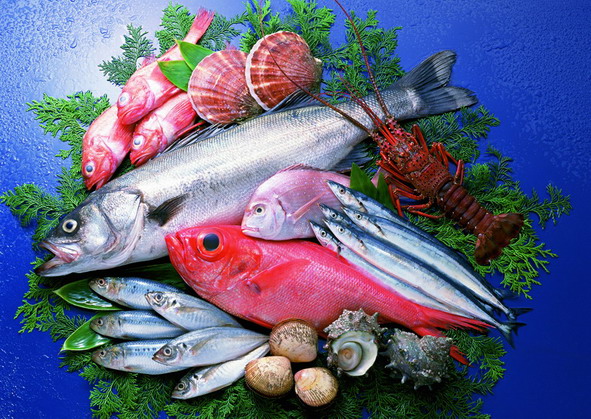
The study report on inorganic arsenic in foods presents the assessment of the dietary exposure of the Hong Kong population to a metallic contaminant, inorganic arsenic.
Arsenic is a metalloid that occurs in inorganic and organic forms, which are found in the environment from both natural sources and human activities. Low levels of inorganic arsenic in foods may be unavoidable due to its ubiquitous nature in the modern industrial world. Food is recognised as the major source of inorganic arsenic exposure. In general, inorganic forms of arsenic are more toxic to humans than organic ones while the trivalent form (arsenite) is more toxic than the pentavalent form (arsenate). The main adverse effects in human after long-term ingestion of inorganic arsenic are cancer, skin lesions, cardiovascular disease, neurotoxicity and diabetes.
In 2010, the Joint Food and Agriculture Organization / World Health Organization Expert Committee on Food Additives (JECFA) determined the inorganic arsenic benchmark dose lower confidence limit for a 0.5% increased incidence of lung cancer in human (BMDL0.5) which computed to be 3.0 μg/kg body weight (bw) /day. In other words, at a daily exposure to inorganic arsenic of 3.0 μg/kg bw, the conservative estimate of the increase of lung cancer incidence in the population would be 0.5%. In fact, the BMDL cannot be regarded as a safety reference value, in which exposure level below this point does not mean there is no health risk. Furthermore, the margins of exposure (MOEs) are also calculated by taking relative cancer potency and exposure estimates into account to provide an indication of the level of health concern without actually quantifying the risk (i.e. the lower the MOE, the greater the health concern, and vice versa). MOEs can be used for priority setting for risk management actions.
Results
From March 2010 to February 2011, a total of 1 800 individual samples were taken on four occasions. They composed of 150 different foods with 3 purchases collected on each of the four occasions. These individual samples were then processed into 600 composite samples for inorganic arsenic test. The test showed that about half of the composite samples (51%) were detected with inorganic arsenic (Limits of detection were 3 and 1.5 μg/kg in food and water respectively).
Among the 15 food groups, "eggs and their products" contained the highest inorganic arsenic level (mean: 23 μg/kg), followed by "fish and seafood and their products" (mean: 15 μg/kg), and "vegetables and their products" (mean: 9 μg/kg). Besides, the mean inorganic arsenic level in "cereals and their products" was 8 μg/kg. On the other hand, all samples of dairy products and fats and oils were not detected with inorganic arsenic.
At food item level, water spinach was found to contain the highest level (mean: 74 μg/kg, ranged from 35 to 120 μg/kg), followed by salted egg (mean: 58 μg/kg) and oyster (mean: 58 μg/kg), whereas no water sample from our study has been detected with inorganic arsenic.
The study found that the dietary exposures to inorganic arsenic were 0.22 and 0.38 μg/kg bw/day for average and high consumers of the population respectively, and those of the individual age-gender population subgroups ranged from 0.19 to 0.26 μg/kg bw/day and from 0.33 to 0.46 μg/kg bw/day for average and high consumers respectively. All the dietary exposure estimates were below the range of BMDL0.5 determined by JECFA, with the MOEs ranging from 9 to 32 and from 5 to 18 for average and high consumers of the population respectively. Having considered the carcinogenic risk of inorganic arsenic, efforts should be made to reduce the exposure to inorganic arsenic of the population.
The main dietary source of inorganic arsenic was "cereals and their products" which contributed to 53.5% of the total exposure, followed by "beverages, non-alcoholic", "vegetables and their products" and "fish and seafood and their products" which contributed to 13.0%, 10.4% and 7.9% of the total exposure respectively.
Rice is the major contributor of the dietary exposure to inorganic arsenic, in which the cooked white rice alone accounted for 45.2% of total exposure. This was consistent with the data reported in other countries where rice is the staple food.
Conclusions and Recommendations
The dietary exposures to inorganic arsenic of the population were below the range of BMDL0.5 as determined by JECFA. Having considered the carcinogenic risk of inorganic arsenic, efforts should be made to reduce the exposure to inorganic arsenic of the population.
The food trade is advised to observe good agricultural practices to minimise inorganic arsenic contamination of foods, such as avoid using arsenic contaminated water for irrigation.
The findings of the current study are not sufficient to warrant changes in basic dietary advice on healthy eating, i.e. have a balanced and varied diet, and take cereals, such as rice, noodles, oatmeal and bread, as the major dietary source. Those individuals, who wish to reduce the exposure to inorganic arsenic, can consider choosing more other cereals, which generally contain lower levels of inorganic arsenic than rice, as part of their diet. In addition, they can wash rice thoroughly but without excessive washing as some nutrients may be lost, and discard the washed water before cooking so as to reduce the arsenic levels, especially the inorganic form.

Canola Oil and Food Safety
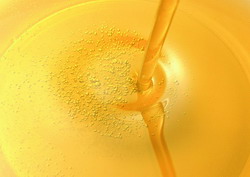 Unfounded messages about food safety are in circulation from time to time. Among them, people are saying that canola oil is associated with mustard gas, bovine spongiform encephalopathy (BSE, also known as Mad Cow Disease) or fatty degeneration in organs such as heart and kidneys.
Unfounded messages about food safety are in circulation from time to time. Among them, people are saying that canola oil is associated with mustard gas, bovine spongiform encephalopathy (BSE, also known as Mad Cow Disease) or fatty degeneration in organs such as heart and kidneys.
Misinformation about the safety of canola oil may arise from the erroneous belief that it is the same as rapeseed oil. In fact, canola oil is made from the plant developed from natural cross breeding of the rapeseed plant with unwanted traits removed.
Canola oil has only low levels of erucic acid (below 2% of total fatty acids), contrary to traditional rapeseed oil which may contain high levels of erucic acid (up to 60% of total fatty acids). Health concern on excessive intake of erucic acid is related to its potential to cause heart tissue damage in animal studies.
Canola oil is low in saturated fat and has high proportion of unsaturated fat. It is safe for consumption as part of a balanced diet.
Tips on "Getting the Temperature Right"
Be mindful of what you eat, "Eat Cooked Food Only"
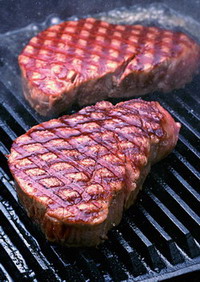
Undercooked foods contain lots of bacteria. How can you put them in your mouth? When cooked meat and poultry are cut, juices should be clear and not be pink. As for eggs, the yolks should be firm. Soup should be kept boiling for at least one minute before serving. Keep in mind the above tips to ensure safe food consumption!
Upcoming Activities
Regional Symposium on Food Claims: Truth and Myth
The CFS will hold a Regional Symposium on Food Claims: Truth and Myth on 29 and 30 October 2012. The Symposium aims at allowing participants (including experts from Hong Kong, Mainland China and other countries) to exchange views on the latest developments of food safety in various regions, fostering collaborations among the trade and providing a platform for communication and trading relating to food.
All interested parties are welcome. For details, such as the venues of the Symposium, please visit the CFS website (http://www.cfs.gov.hk).
News on New Dishes
Mediterranean Delights – Linguine with King Prawns and Sea Scallops in Saffron Juice
The endless variety of international cuisine in Hong Kong has made the city an undisputed Gourmet Paradise. In this issue of News on New Dishes, we will go beyond the Asian borders and introduce a dish rich in Mediterranean flavours – Linguine with King Prawns and Sea Scallops in Saffron Juice. Chef Gary Wong of Hotel Nikko Hongkong has demonstrated to us how to prepare this Mediterranean dish.
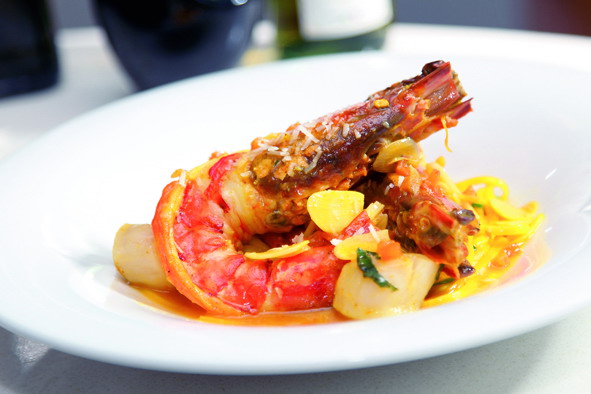
| Preparation Steps | Small Tips, Big Wisdom | |
|---|---|---|
Rinsing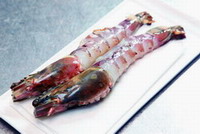 |
Defrost the frozen king prawns and sea scallops completely under running water and rinse thoroughly. | Upon receipt of the king prawns, immediately trim off all their legs and feelers as they may trap bacteria and dirt. |
Pan-frying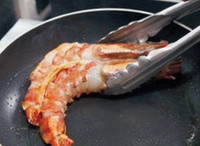 |
After removing the shells and intestines of the king prawns, add in sea scallops and season with salt and pepper. Put them in a pan heated with olive oil and pan-fry until golden brown. Transfer to a plate and set aside. |
Removing the intestines of king prawns can effectively reduce the risk of food contamination while removing their shells can make it easier to cook thoroughly. Choose sea scallops without shells as their shells may trap bacteria and dirt. |
Stir-frying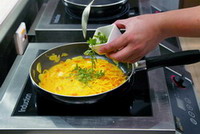 |
Stir fry shallots and garlic slices with olive oil until fragrant. Add white wine, shredded tomatoes, chicken stock, Spanish saffron powder and linguine (almost done) and cook together. Take linguine from the pan. Add grated cheese, basil, unsalted butter and Pernod and dish up. |
Olive oil is not only healthy but can bring out the flavour of food. However, one should choose the type suitable for high heat cooking. |
Cooking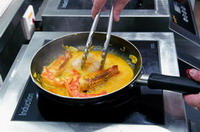 |
Put the pan-fried king prawns and sea scallops back to the pan with the sauce. When they are cooked thoroughly, place them on top of the linguine. | As seafood is easily contaminated by Vibrio parahaemolyticus, king prawns and sea scallops must be thoroughly cooked before serving to customers. |
Tips from Chef Gary Wong:
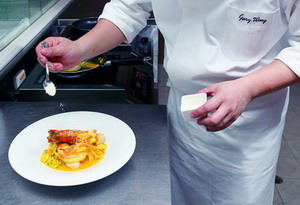
- To ensure the hygiene and safety standards of the ingredients, the hotel only purchases ingredients from licensed suppliers.
- When the purchased ingredients arrive, they will first be carefully checked by professional hotel staff to ensure that they are up to standard. If the quality of the ingredients is found to be unsatisfactory, the hotel will inform the suppliers and ask them to follow up so as to safeguard food safety and maintain the reputation of the hotel.
- Ingredients will be immediately stored under suitable environmental conditions upon receipt. For example, frozen king prawns and sea scallops will be stored in freezers at -18℃ or below while dry goods such as linguine will be stored in a hygienic and dry storage place.
- Apart from paying attention to the sources and hygiene of the ingredients, the hotel also attaches great importance to the environmental hygiene of the kitchen. From cooking utensils to worktops, the floor and the wall, everything has to be clean and hygienic.
- Chef Gary Wong always reminds his colleagues to take heed of food safety in order to produce fine cuisine which is high in standard.
Hotel Nikko Hongkong is committed to ensuring food safety and has become a signatory of the Food Safety Charter for three consecutive years since 2009. It has fulfilled its mission as a signatory and joined hands with the Government to promote food safety to the public.
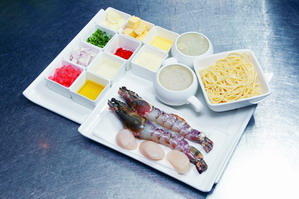
Food Safety Plan Corner
Linguine with King Prawns and Sea Scallops in Saffron Juice
Ingredients
Frozen king prawns, frozen sea scallops, linguine, shredded tomatoes, shallots, garlic slices and Spanish saffron powder
Seasoning
Olive oil, grated cheese, basil, unsalted butter, white wine, Pernod, chicken stock, salt and pepper
Steps
- Defrost the frozen king prawns and sea scallops. Remove the shells and intestines of king prawns, add in sea scallops and season with salt and pepper.
- Put the king prawns and sea scallops in a pan heated with olive oil and pan-fry until golden brown. Set aside.
- Stir-fry shallots and garlic slices in olive oil until fragrant. Add white wine, shredded tomatoes, chicken stock, Spanish saffron powder and linguine and cook together. Add grated cheese, basil, unsalted butter and Pernod and dish up.
- Put the pan-fried king prawns and sea scallops back to the pan with the sauce. When they are cooked thoroughly, place them on top of the linguine.
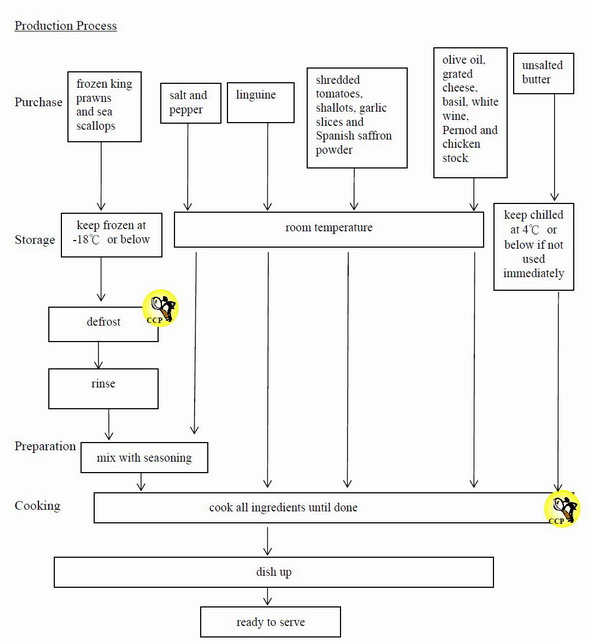
Critical Control Point (CCP)
It is a step or procedure in a food manufacture process at which control can be applied and as a result, food safety hazard can be prevented or eliminated.
There are two Critical Control Points in the production of Linguine with King Prawns and Sea Scallops in Saffron Juice:
- Frozen king prawns and sea scallops should be defrosted completely before use.
- Food should be cooked thoroughly before consumption.
Briefing of Activities
Food Hygiene Seminar (Public Series)
 Tripartite collaboration and proactive participation among the Government, the trade and consumers are essential in enhancing food safety in Hong Kong . To enhance public knowledge on food safety, the CFS organised four sessions of free seminars on "5 Keys to Food Safety" under the Food Hygiene Seminar 2012 (Public Series) from July to August. In the seminars, information on Hazard Analysis and Critical Control Point(HACCP) and proper food handling were introduced. The seminars were conducted in Cantonese and open to both the public and employees of the food business. A certificate of attendance and a delicate souvenir were awarded to every participant. For details, please visit the CFS website (http://www.cfs.gov.hk).
Tripartite collaboration and proactive participation among the Government, the trade and consumers are essential in enhancing food safety in Hong Kong . To enhance public knowledge on food safety, the CFS organised four sessions of free seminars on "5 Keys to Food Safety" under the Food Hygiene Seminar 2012 (Public Series) from July to August. In the seminars, information on Hazard Analysis and Critical Control Point(HACCP) and proper food handling were introduced. The seminars were conducted in Cantonese and open to both the public and employees of the food business. A certificate of attendance and a delicate souvenir were awarded to every participant. For details, please visit the CFS website (http://www.cfs.gov.hk).
Food Safety Q&A
Question: Should eggs be washed before being stored in refrigerators?
Answer: In fact, shell eggs need not be washed before being stored in refrigerators as any process that wets the shell may facilitate the entry of microorganisms (due to water entry through the pores together with microorganisms by capillary action). Water left on shell surface may also enhance the survival and reproduction of microorganisms on egg shells. In addition, improper washing may damage the cuticle of the shell.
Many eggs sold on the market have been cleaned during commercial egg processing. The cleansing work needs to be conducted in a controlled manner in order to minimise the entry of microorganisms. The eggs are washed as soon as possible after they are laid and eggs with cracks are removed. The surface of the eggs is sanitised with special detergents that do not damage the cuticle. Water used for washing should be warmer than the temperature of the eggs, but should not be too hot to avoid damaging the cuticle. Eggs washed with water cooler than the eggs will facilitate the entry of bacteria into them. After washing, the eggs are dried immediately. Some of them may even be sprayed with a layer of mineral oil which replaces the original cuticle that may be lost during washing.
Advice to Consumers
- Purchase eggs from reliable and reputable suppliers. Observe the expiry date and storage temperature on the package ∕ label of eggs.
- As a general rule, shell eggs need not be washed. However, if eggs are seen to be soiled with faecal matter, they can be washed (with household detergent if required). Washed eggs should be cooked immediately.
- Avoid eating raw or inadequately cooked eggs and egg products, particularly so for the elderly, infants and pregnant women. Eggs should be thoroughly cooked until the yolk and white are firm before consumption.
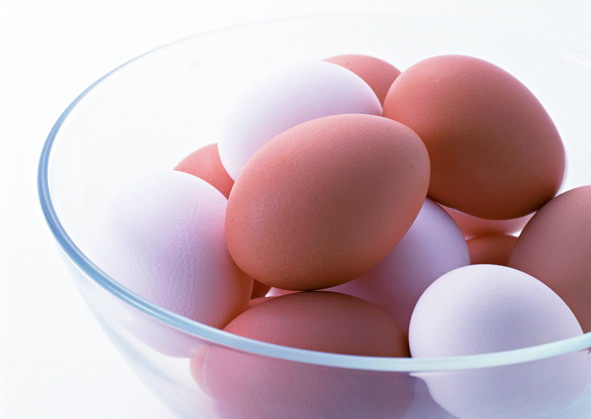
Facts and Myths
Does the symbol found on the bottom of a plastic water bottle mean the bottle can be recycled for use once?

Myths
Grandma: Ming, does the symbol  on the bottom of this plastic distilled water bottle mean I can reuse the bottle once?
on the bottom of this plastic distilled water bottle mean I can reuse the bottle once?
Facts
Ming: Grandma, the symbol is actually only a code for the resin content of a plastic bottle or plastic container and serves to facilitate plastic recyclers' sorting and recycling work. It does not represent the times that the bottle can be reused.
Grandma: Then, can I use this plastic water bottle to hold vinegar or oil?
Ming: Grandma, in no case should we do so. Improper cleaning and handling of these disposable plastic bottles may pose potential health risk including growth of bacteria and migration of chemicals.
If plastic bottles are not air dried thoroughly after washing and used again, bacteria or fungi may grow inside the bottles and contaminate the water in the newly refilled bottles. Improper use of plastic bottles, such as using those originally for holding water to store vinegar or oil, or using the bottles to hold hot water, may result in migration of chemicals from the bottles or physical deformation of the bottles. In addition, it is better not to expose these disposable plastic bottles to sunlight directly. If the plastic bottles are broken, they certainly should not be reused.
Grandma: It requires so much knowledge after all! I should wash and handle these plastic bottles carefully if they are to be used again in the future.
Brain Gym
The food items on the right are easily contaminated by the germs on the left, leading to food poisoning. Please link them together:
|
E. coli O157:H7 |
• | • |
I nadequately cooked pig livers |
|
Vibrio parahaemolyticus |
• | • |
Food handled manually but need not be cooked again or reheated afterwards (e.g. sandwiches) |
|
Bacillus cereus |
• | • |
Inadequately cooked meat, poultry, egg and their products |
|
Salmonella species |
• | • |
Inadequately cooked beef and beef products, especially minced beef (meat hamburgers) |
|
Staphylococcus aureus |
• | • |
Rice (e.g. leftover rice), meat products and vegetables |
|
Hepatitis E |
• | • |
Inadequately cooked seafood and its products |